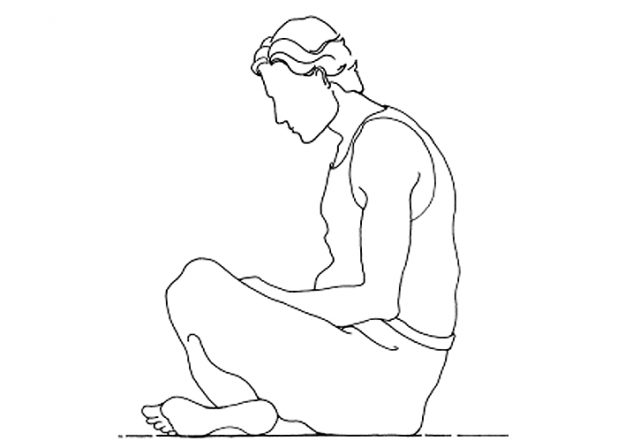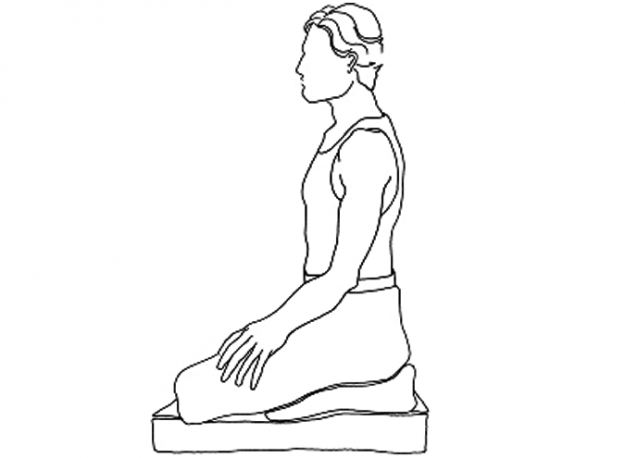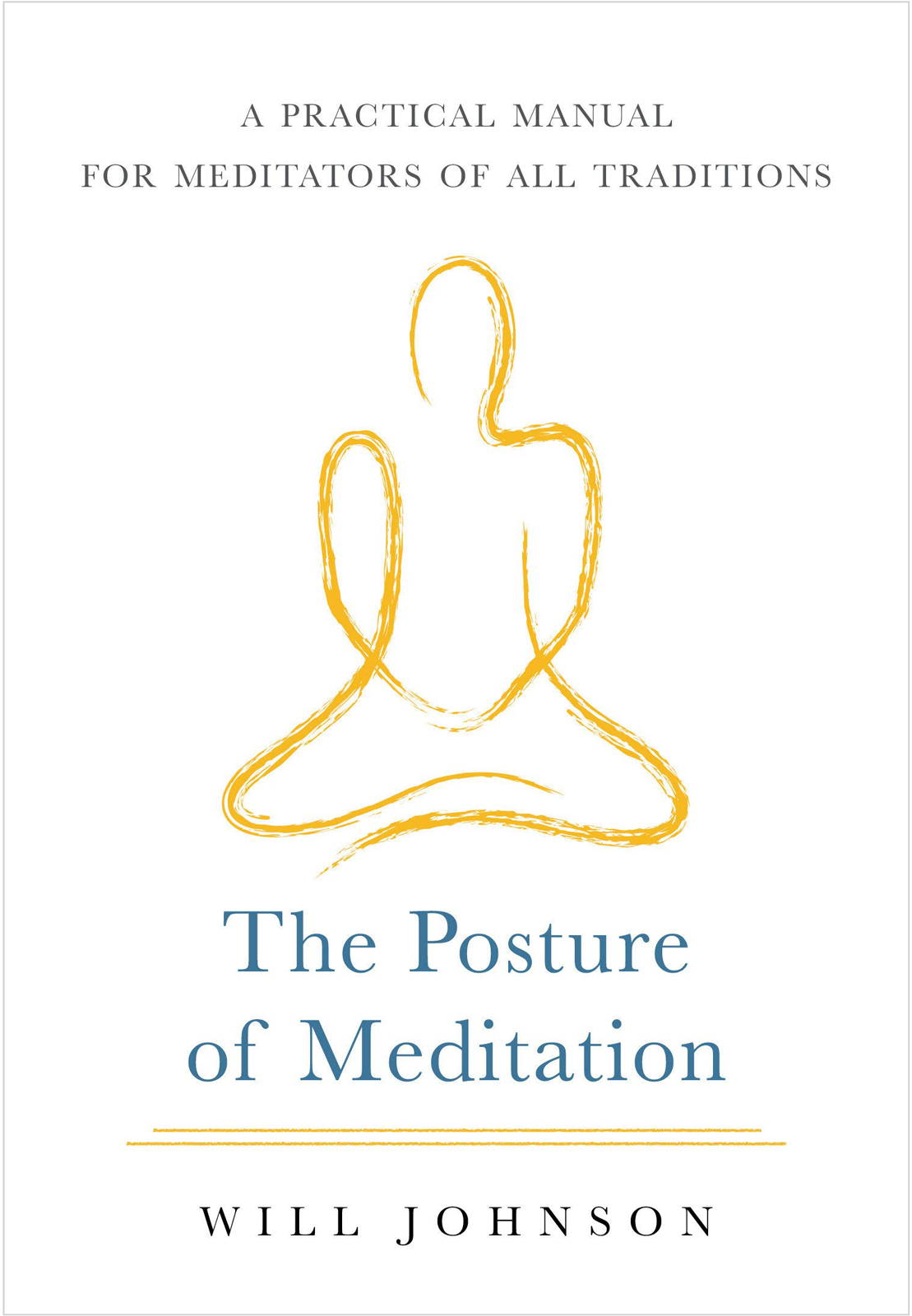Any child who enjoys playing with building blocks understands the principles and importance of alignment. If the blocks are placed one directly on top of the other, the pile remains standing. If the blocks do not bear this vertical relationship to one another, the pile falls over.
These very same principles of alignment determine the degree of balance available to a human body. The building blocks of the human body are the major bodily segments: the feet, the lower legs, the upper legs, the pelvis, the abdomen and lower back, the chest and upper back, the shoulders and arms, the neck, and finally, the head. If these segments can be stacked one directly on top of another, that body will be able to stand in a balanced way. A balanced posture requires very little effort to sustain and allows the major muscles of the body to relax. This relatively small expenditure of energy, coupled with the phenomenon of relaxation, produces a distinct feeling of softness, ease, and vibratory flow.
It also generates a natural condition of alert awareness. This dual condition of comfort in the body and relaxed alertness in the mind is the fruit of balance. If the major bodily segments are not comfortably stacked one directly on top of the other, the body (unlike the child’s blocks) won’t topple over, but it will have to compensate for its lack of alignment by exerting constant muscular tension to offset the force of gravity. This constant tension generates a feeling tone in the body of hardening, numbness, and pain. It clouds the mind and makes it difficult to remain focused or alert with any kind of ease.
The exact same force provides support for the balanced body and withholds it from the imbalanced body. That force is the gravitational field of the earth. The force of this field always flows through the vertical. Even though the primary function of this most powerful of planetary forces is to draw objects to its source (the center of the earth), it also provides support or buoyancy to any structure that’s able to conform its shape to the precisely vertical direction of its influence…
The ability to align the upright structure of the body with the directional flow of gravitational energy is the primary requirement in securing the posture of meditation, and its importance cannot be overemphasized. Our first task, then, is to create a structural situation in which gravity supports our bodies and meditative efforts. This task corresponds to the initial instructions to “sit with the back straight.”
Three major structural relationships promote a natural condition of alignment in the posture of meditation. Each relationship builds on the previous one. First of all, the pelvis must be elevated slightly higher than the knees. This allows the pelvis to tip slightly forward so that the weight of the upper body can rest directly above, or even a bit in front of, the sitting bones of the pelvis. The securing of these first two relationships creates a highly stable base of support above which the upper body can balance. Situated atop such a stable foundation, the upper body can come to a relatively effortless condition of balance as it straightens naturally. The right and left sides of the upper body become approximately symmetrical, while the pelvis, abdomen and lower back, chest and upper back, shoulders, neck, and head stack up one on top of the other just like the child’s building blocks.
It may be easier to appreciate just how important these three structural configurations actually are by examining what happens in the body when these relationships don’t exist…

The posture of collapse may at first appear to be relaxed, but in actuality it isn’t. Within this posture, you constantly have to brace yourself to offset the pull of gravity. If you were truly to relax and surrender the weight of your body to gravity rather than brace yourself against it, you might become more compressed and collapsed, crumble even farther forward until your head was hanging virtually in your lap, or fall backward. In any case, you can’t relax in this posture and maintain your uprightness.
When we don’t experience the force of gravity as a source of support, we must brace and hold ourselves against it. Holding in the body very directly creates holding in the mind. Such holding restricts the function of the mind to its most superficial dimensions and will often manifest as an ongoing internal monologue that comments on everything that passes before it and indulges in fantasies about the past and future. The sense of self that accompanies this dimension of the mind will view itself as an entity named “I” separate and distinct from the rest of the world, which it fearfully views as being other than itself and a threat to its existence. Much like a cloud that hides the warming brilliance of the sun, this superficial dimension of the mind effectively conceals the mind’s deeper possibilities. It is the superficiality of this most conventional dimension of mind, as well as the deeper possibilities that exist beneath this dimension, that the process of meditation works to expose and reveal…
When the sacral, lumbar, thoracic, and cervical regions of the spine are able to assume the slight curvature natural to them, the upper body becomes vertical and upright. The right and left sides of the body appear to hang symmetrically off of the vertical axis that has been established in the very center of the torso. The length of the front of the body appropriately matches the length of the back. Maximum space is created in the belly for the internal abdominal organs to settle comfortably. Restrictions to the immediate structures involved in the action of breathing are minimized as well. Just as the tallest trees and skyscrapers appear to stand effortlessly, so too can the sitting meditator experience a place of calm and stability through bringing the body into vertical alignment in this way. Because the verticality of structures is supported by the force of gravity, over time the meditator will come to realize how comfortable this posture feels.

It’s important to stress that the posture of meditation is not a contrived or contorted positioning of the body whose purpose is to generate unusual insights or states of consciousness. On the contrary, once we’re comfortably able to find and assume this posture and begin to experience the buoyant support of gravity, a distinct feeling tone of naturalness and authenticity begins to appear. We begin to realize that the posture of meditation reveals not some extraordinary condition of the body and mind but rather the natural state that’s available to us as our birthright. By aligning the body with the vertical flow of the force of gravity, we begin quite literally to experience the support of the larger universe of which we’re but a small part. Alignment that conforms to the directional flow of gravity has a distinct feeling tone of rightness to it. This feeling tone, or lack of it, becomes our primary guide as we attempt to find this place of alignment and bring it into our sitting posture. If we sit in front of a mirror and consciously manipulate the various parts of the body to conform to the vertical, we may unwittingly bring more tension into our sitting posture. This is like attempting to superimpose alignment onto the structure of the body from the outside in. If, however, we simply generate the three primary gestures of alignment (the pelvis higher than the knees; the very bottom, or even a place just in front of the very bottom, of the sitting bones contacting the cushion; the upper torso balancing itself as effortlessly as possible over the stable base of support created by the first two gestures) and then allow the body to make whatever adjustments in posture spontaneously occur, the feeling tone of alignment gradually and inevitably begins to emerge. Paying more attention to the feeling tone of alignment rather than to its spatial coordinates allows us to align ourselves with gravity from the inside out.
Because everybody is unique, there can be no specific rules as to how much higher the pelvis should be than the knees. You will need to experiment with different thicknesses of supporting cushions (or heights of kneeling benches or chairs) until you find the combination that’s appropriate for your body. Over time, as the posture of your meditation continues to refine itself, this combination may have to be adjusted. Stay sensitive to the feeling tones of balance. They’ll provide you with continuous information that will allow you to determine whether or not your body is continuing to move in the direction of alignment.
♦
Adapted from The Posture of Meditation by Will Johnson © 1996/2020 by Will Johnson. Reprinted in arrangement with Shambhala Publications, Inc., Boulder, CO. The Posture of Meditation was reissued on August 25, 2020, the 25th anniversary of the original release, with a new preface from the author, and a revised and expanded second portion.
To explore these practices further, check out Will Johnson’s online course, The Posture of Meditation, from Tricycle Online Courses. To learn more and sign up visit learn.tricycle.org.
This article was originally published on July 23, 2021.

